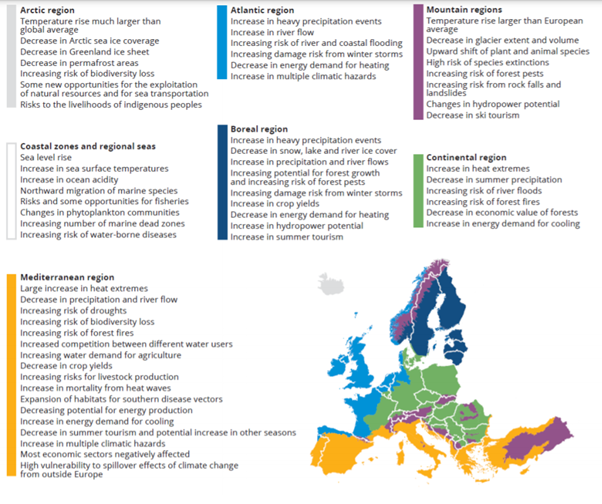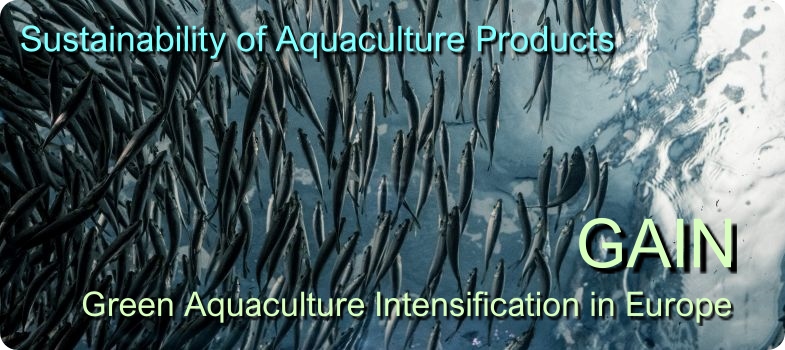How and why sustainability is reported
Increasingly environmentally and socially aware consumers are looking to make informed choices on where their food comes from and how it is produced. Consequently, retailers, producers’ organisations, and other stakeholders in food production systems
are looking to measure their sustainability credentials, make improvements to their practices and then communicate that information to their customers.
The following video is a podcast featuring GAIN Researcher, Wesley Malcorps, who investigated the way sustainability messages are being used in different seafood markets:

Figure 3: Regional climate change impacts in Europe (source EC)
The EU has introduced the Product Environmental Category Rules (PEFCR) which are the rules which should be applied to measuring the environmental footprint
of EU products and have been developed in an effort to harmonise environmental footprinting (Ojala et al 2016). The EU is currently developing PEFCR for major product categories
including food and feed (European Commission, 2018a) (See https://ec.europa.eu/environment/eussd/smgp/ for context and comprehensive background). In addition, major aquaculture certifiers demand a minimum level of responsible and sustainable practices across a series of different categories. Certification can provide confidence to retailers that they
are sourcing responsibly, where regulation is weak or poorly enforced, which enables them to communicate those sustainability credentials to their customers.
